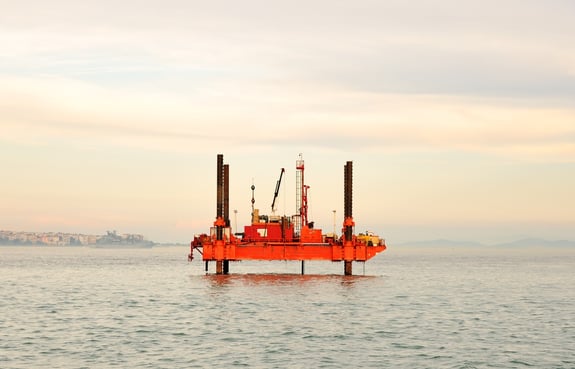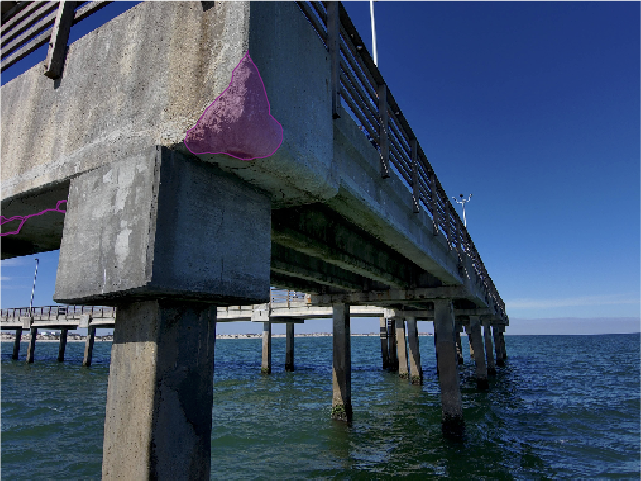There exists a vast amount of oil and gas deposits in the deep seas and oceans. However, unlike the conventional rigs on land, oil exploration and drilling in the deep waters is more challenging, both technically and financially.
Even though oil drilling on land is still considered tedious, it cannot be compared with the offshore that has much worse conditions. First, the drilling companies require expensive and complicated equipment in the offshore platforms in order to access the oil reservoirs under the water.
Secondly, with extreme weather, snowing, high waves and wind conditions, coupled with unfriendly working spaces, the platform require constant inspection and the staff requires safety gear and tools.
The offshore platform presents a structure with many logistical, economical and technical challenges. It is definitely very expensive and requires specialized inspection equipment and techniques suitable for the environment. In addition, the presence of extreme weather and other environmental conditions, as well as special processes, requires somewhat different and more complex inspections, both internally and exterior.
-
Harsh Weather and Operating Conditions
There is usually harsh weather around the offshore platforms which includes extreme hail and snow, rain, strong winds, tidal waves, high-speed squalls, etc.
The weather conditions such as extreme rain, snow, and the wind make it very difficult to carry out inspections, however, with modern technologies such as drones designed for industrial inspection, some harsh weather conditions are no longer a problem. The splash areas suffer from hostile and corrosive waters, while the submerged parts are exposed to waves. Inspection engineers must be able to withstand these and ensure that the accuracy of their measurements is not influenced by the conditions.
The other problem is the corrosive nature of the seas and that of the oil products. Corrosion is one of the major causes of deterioration of the metallic structures. While it is possible to easily identify general corrosion on the surface, some other forms such as pitting corrosion.
This type of corrosion is dangerous and yet difficult to detect and especially under the challenging situations in offshore platforms.
-
Complex Structures and Environment
The offshore drilling equipment and structure are often complex, both in design and operation. As such, it requires specialized inspection equipment to access and test all locations, both externally and internally. This is further complicated by the different operating environments and water contact. The offshore platforms have three main parts, above the seawater, splash areas and submerged parts. All these are exposed to different conditions, and also require different inspection equipment and maintenance processes.
Underwater testing may become a challenge depending on the depth of the waters. The extra pressures at lower depths may affect the accuracy of the measurement equipment and readings. In addition, the divers may have challenges such as reaching the more deep points as well as limited control of the inspection equipment.
-
Requirement for Multi-talented inspectors
Most companies do not have multi-talented inspectors who can perform several tests at a time. And it is sometimes not possible for professionals from different trades to make a combined team to handle the inspection at one go. For these reasons, each individual specialist will need to look at the areas below and above sea level differently.
-
Tight and difficult to access spaces
These may hinder the free movement of the personnel as well as the equipment. In some situations, it may limit the size of test equipment to only the small sized ones that can fit in the tight spaces. This means either use of costly, specialized test or inspection equipment for the offshore platform, or using what is available, and probably not getting the true picture of what was being checked.
The cost of inspecting the offshore platform varies according to the location of the inspection. For example, the work and costs for inspecting the coating of an offshore platform are influenced by the area to be inspected as well as its ease of access. While exterior jobs are easy and relatively inexpensive, the same cannot be said for the internal tanks and other areas that may require rope access.
The costs for inspecting the interiors can be as high as 4 to 10 times higher. However, with emerging technologies such as drone inspections, both exterior and confined space of an offshore platform can be inspected using drones. This provides an alternative for a lower cost, higher efficiency, and safer inspection environment.
-
Risky Atmosphere
The atmosphere around the offshore platforms is usually unfriendly and risky. This is mainly attributed to the substances used to process the hydrocarbon resources as well as what it generates. The process produces gasses which are toxic, explosive, or corrosive, and others having a combination of these properties.
In particular, the hydrocarbon releases when in liquid form cause slippery platforms that often lead to falls and slips. In addition, the gaseous form of the same causes respiratory complications.
-
Poor and limited communication networks
Even with state-of-the-art communication systems, the network can in most cases become erratic, hence hindering proper communication. This may slow down the inspection process since it is not possible to obtain the data in good time. In addition, the inspection equipment may require being much heavier and complicated so as to capture, store and probably analyze the data.
Delays in communication become an inconvenience, especially if the inspector cannot reliably communicate with others for more equipment or manpower. This may lead to delays in concluding the inspections, and is not desirable in the industry, especially if there are problems that need fixing immediately.
CONCLUSION:
There are several challenges when it comes to inspecting offshore platforms. The inspection methods differ from one test to another and this is often influenced by the structure design, water depth, location and tests to carry out. However, new technologies, such as drones services, remotely operated vehicles, and robots, are increasingly making it easier and safer to carry out the exercises.
Factors to consider when selecting the inspection equipment include cost-benefit relationship, protection of the environment, the safety of the workers and inspection personnel, availability of the technology and priority of the inspection exercise. In addition, the time required as well as the availability of the inspection equipment and support services is of paramount importance.

Tags
Oil and Gas



.png)
